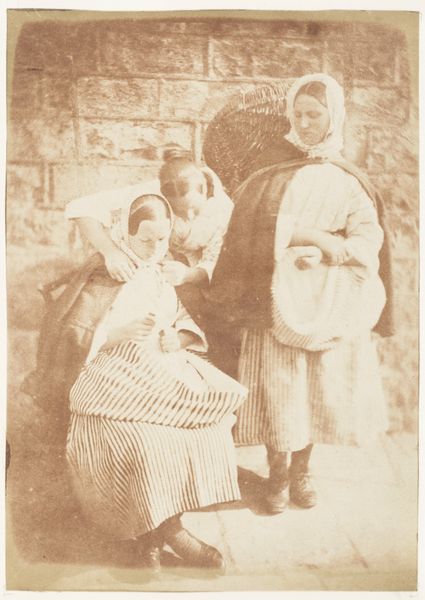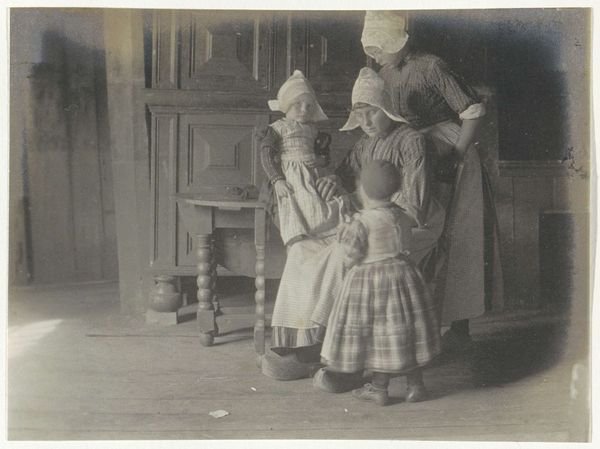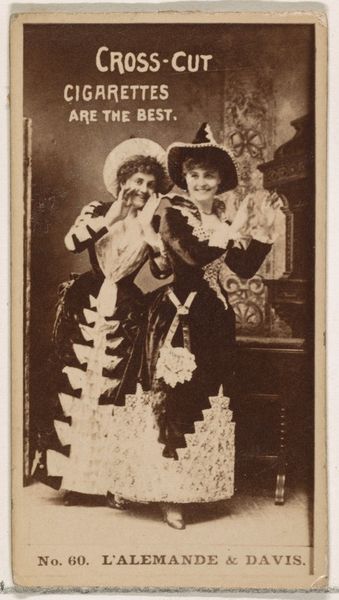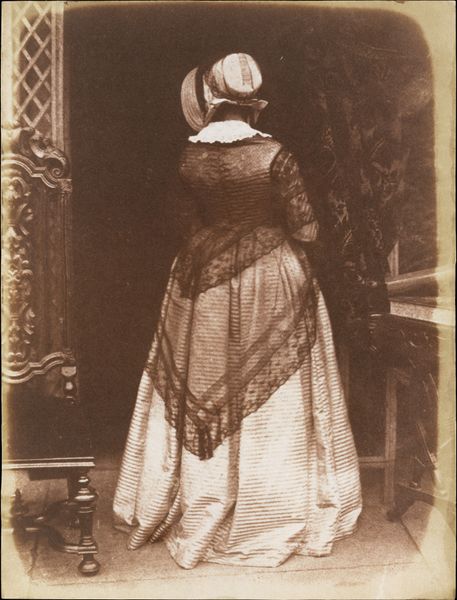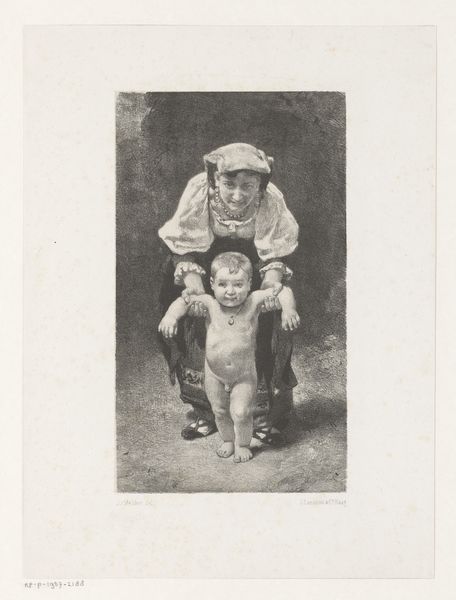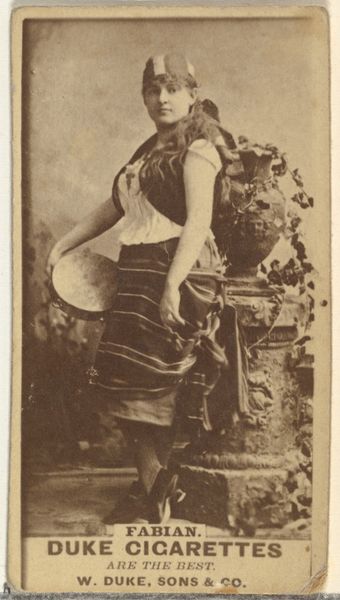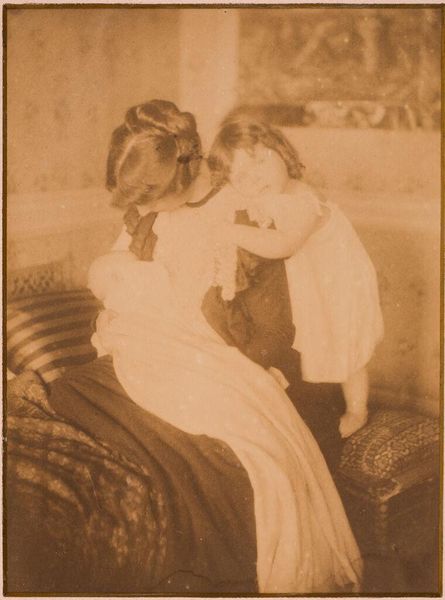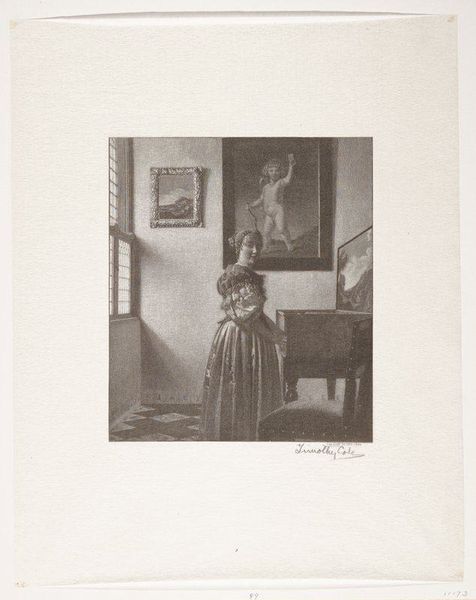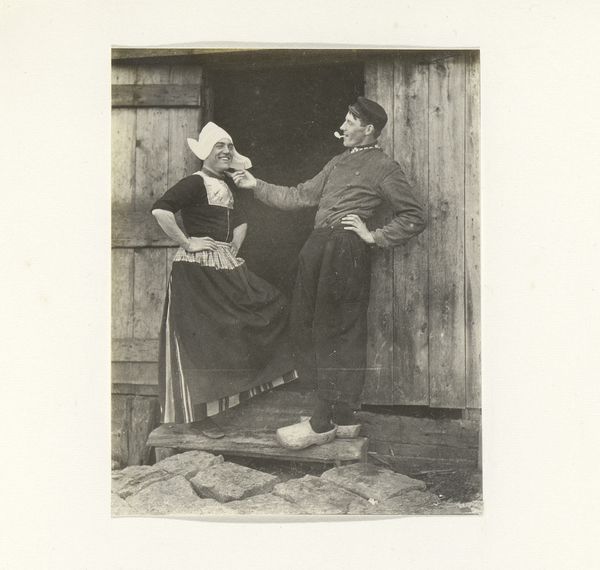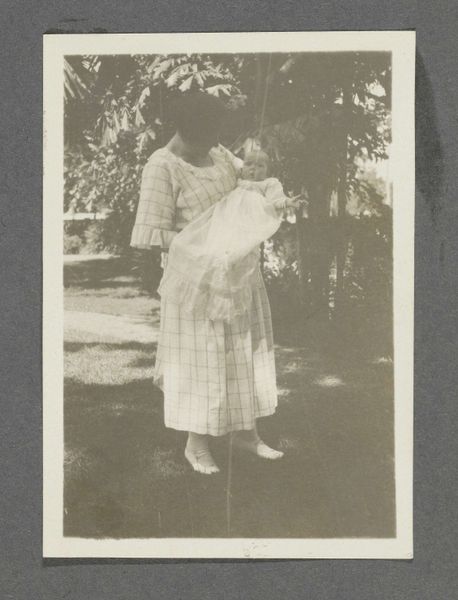
Portret van drie kinderen in klederdracht, vermoedelijk in Volendam c. 1900 - 1910
0:00
0:00
photography
#
portrait
#
archive photography
#
photography
#
culture event photography
#
historical photography
#
child
#
genre-painting
Dimensions: height 212 mm, width 114 mm
Copyright: Rijks Museum: Open Domain
Curator: Here we have an early 20th-century photograph titled "Portret van drie kinderen in klederdracht, vermoedelijk in Volendam," which translates to "Portrait of three children in traditional clothing, probably in Volendam." Editor: It strikes me immediately as stiff, formal even, but there's something endearingly awkward about it, too. The texture looks incredible; you can almost feel the fabric of their costumes. Curator: Precisely. These meticulously crafted costumes are more than mere clothing. They represent a conscious performance of Volendam identity. Think about the socio-political landscape of the time; preserving traditions like these was a statement in a rapidly modernizing world. Who gets to represent Dutch identity here, and for whom? Editor: Right, and let's not forget the labor involved. Someone crafted these costumes, probably with significant time and skill invested. The stark contrasts of light and shadow accentuate the textures, pointing back to the making. What was the process of acquiring the materials? And what are the social relations imbedded in this cultural heritage? Curator: The choice to present these children in such attire can be interpreted through various lenses, gender expectations for instance, perhaps socio-economic display, or resistance of a homogenized Dutch culture at the turn of the century. What sort of audience was intended for this staged, artificial composition? Editor: Perhaps part of the consumption, the very circulation of this image was its function? I think examining the historical production and display helps deconstruct simplistic ideas about Dutch national identity being a unified construct. Curator: It really prompts us to examine notions of childhood and cultural performance and even Dutch exceptionalism. Editor: Yes, and considering this piece has helped clarify how deeply labor, materiality, and image-making shape collective memory. Curator: Indeed, this piece has given me pause to reconsider ideas about national and personal belonging, and who holds power when it comes to writing the visual narratives that become history.
Comments
No comments
Be the first to comment and join the conversation on the ultimate creative platform.


